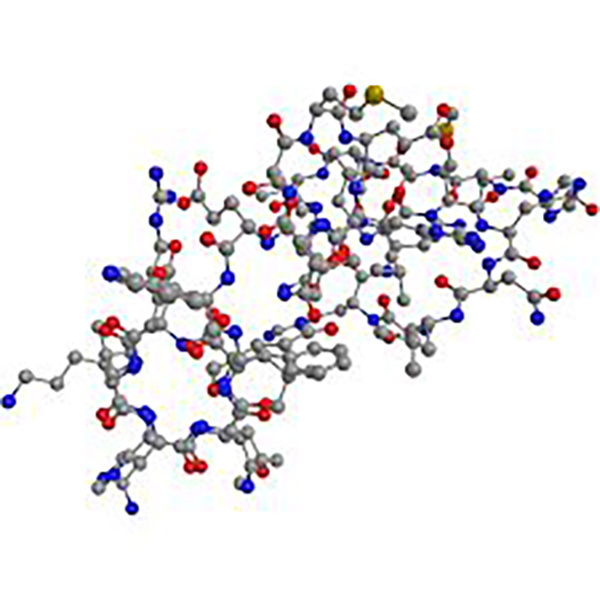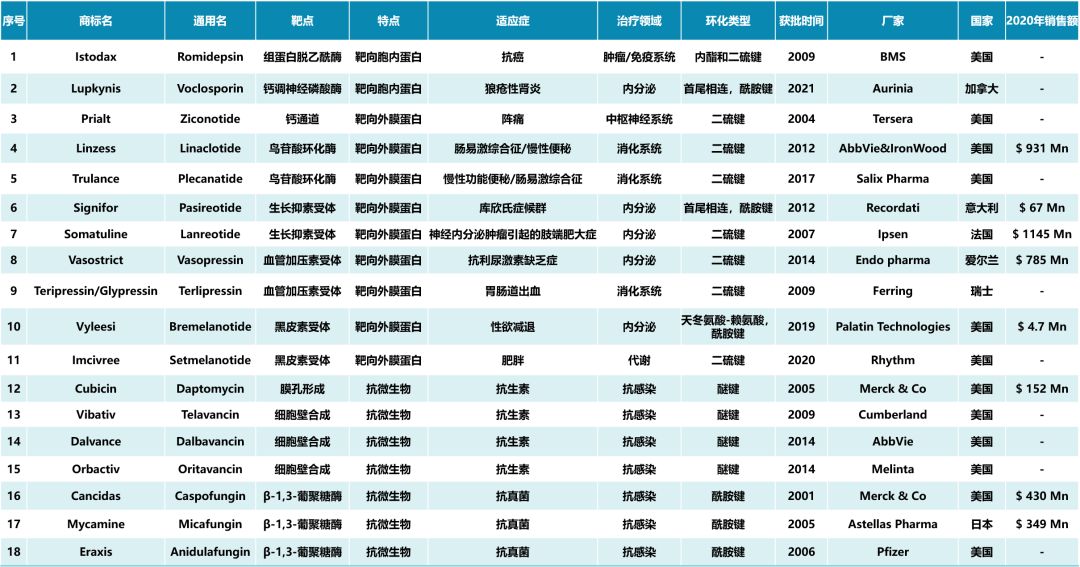Peptide is an organic compound, which is dehydrated from amino acids and contains carboxyl and amino groups. It is an amphoteric compound. Polypeptide is a compound formed by amino acids linked together by peptide bonds. It is an intermediate product of protein hydrolysis. It is formed by dehydration and condensation of 10~100 amino acid molecules, and its molecular weight is less than 10000Da. It can penetrate a semi-permeable membrane and is not precipitated by trichloroacetic acid and ammonium sulfate, including bioactive peptides and artificial synthetic peptides.

Polypeptide drugs refer to polypeptides with specific therapeutic effects through chemical synthesis, gene recombination and animal and plant extraction, which are mainly divided into endogenous polypeptides (such as enkephalin and thymosin) and other exogenous polypeptides (such as snake venom and sialic acid). The relative molecular weight of polypeptide drugs is between protein drugs and micromolecule drugs, which has the advantages of micromolecule drugs and protein drugs. Compared with micromolecule drugs, polypeptide drugs have high biological activity and strong specificity. Compared with protein drugs, polypeptide drugs have better stability, low immunogenicity, high purity and relatively low cost.
Polypeptide can be directly and actively absorbed by the body, and the absorption speed is fast, and the absorption of polypeptide has priority. In addition, peptides can not only carry nutrients, but also transmit cellular information to command nerves. Polypeptide drugs have the characteristics of high activity, high selectivity, low toxicity and high target affinity, but at the same time, they also have the disadvantages of short half-life, poor cell membrane permeability and single route of administration.
In view of the shortcomings of polypeptide drugs, researchers have made unremitting efforts on the road of optimizing peptides to improve the bioavailability of polypeptide drugs. Cyclization of peptides is one of the methods to optimize peptides, and the development of cyclic peptides has brought dawn to polypeptide drugs. Cyclic peptides are beneficial to medicine because of their excellent metabolic stability, selectivity and affinity, cell membrane permeability and oral availability. Cyclic peptides have biological activities such as anti-cancer, anti-infection, anti-fungus and anti-virus, and are very promising drug molecules. In recent years, cyclic peptide drugs have attracted great attention, and pharmaceutical companies have followed the trend of innovative drug development and laid out cyclic peptide drug tracks one after another.
Dr. Chen Shiyu from Shanghai Institute of Pharmacology, Chinese Academy of Sciences introduced the cyclic peptide drugs approved from 2001 to 2021 in its cyclic peptide drugs approved in last two drugs. In the past 20 years, there are 18 kinds of cyclic peptide drugs on the market, among which the number of cyclic peptides acting on cell wall synthesis and β-1,3- glucanase targets is the largest, with 3 kinds each. The approved cyclic peptide drugs cover anti-infection, endocrine, digestive system, metabolism, tumor/immunity and central nervous system, among which anti-infection and endocrine cyclic peptide drugs account for 66.7%. In terms of cyclization types, there are many cyclic peptide drugs cyclized by disulfide bonds and cyclized by amide bonds, and 7 and 6 drugs were approved respectively.

Post time: Sep-18-2023

